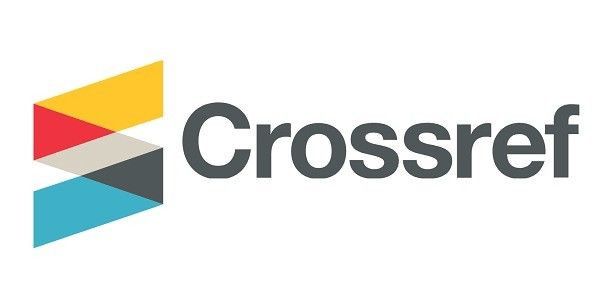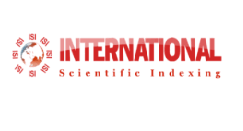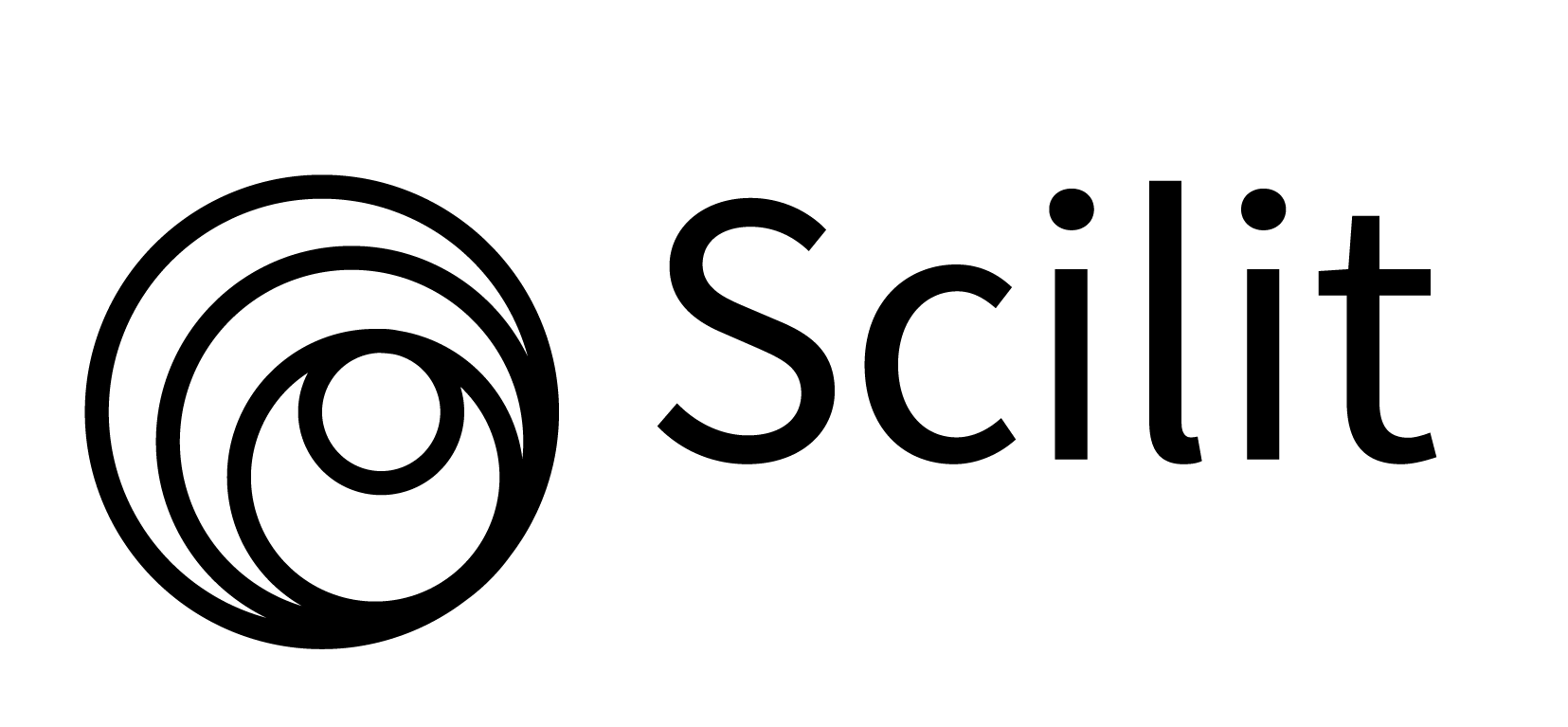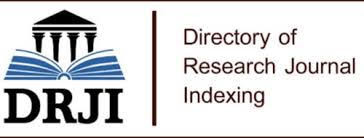Research Article
An Introduction to the Medical Body Mechanics and Human Muscles
- Dr. Emin Taner Elmas
Corresponding author: Emin Taner Elmas, Assistant Professor, Dr., Vocational School of Higher Education for Technical Sciences, Division of Motor Vehicles and Transportation Technologies, Department of Automotive Technology, Igdir University, Turkey & Graduate School of Natural and Applied Sciences - Major Science Department of Bioengineering and Bio-Sciences, Iğdır University, Turkey.
Volume: 2
Issue: 1
Article Information
Article Type : Research Article
Citation : Emin Taner Elmas, Ismail Kunduracioglu. An Introduction to the Medical Body Mechanics and Human Muscles. Journal of Medical and Clinical Case Reports 2(1). https://doi.org/10.61615/JMCCR/2025/APRIL027140418
Copyright: © 2025 Emin Taner Elmas. This is an open-access article distributed under the terms of the Creative Commons Attribution License, which permits unrestricted use, distribution, and reproduction in any medium, provided the original author and source are credited.
DOI: https://doi.org/10.61615/JMCCR/2025/APRIL027140418
Publication History
Received Date
31 Mar ,2025
Accepted Date
14 Apr ,2025
Published Date
18 Apr ,2025
Abstract
This article gives general information about the “Medical Body Mechanics and Human Muscles”.
The study has been realized within the scope of a Ph.D. lesson, which is lectured by Asst. Prof. Dr. Emin Taner Elmas. The name of this Ph.D. lesson is “Medical Engineering and Advanced Biomechanics” and is taught at the Major Science Department of Bioengineering and Bio-Sciences at Iğdır University, Turkey. İsmail KUNDURACIOĞLU is a Ph.D. student, and he is one of the students taking this course. This article has been prepared within the scope of this Ph.D. lecture, as a part of one of his (İsmail KUNDURACIOĞLU) homework assignment tasks which was prepared using the summary translation of Reference [1]: Book Chapter 2.
[1], [2], [3], [4], [5], [6], [7], [8], [9], [10], [11], [12], [13], [14], [15], [16], [17], [18], [19], [20], [21], [22], [23], [24], [25], [26], [27], [28], [29], [30], [31], [32], [33], [34], [35], [36], [37], [38], [39], [40], [41], [42], [43], [44], [45], [46], [47], [48], [49], [50], [51], [52], [53],[54], [55]
Keywords
Human Body, Body Mechanics, Human Body Mechanics, Medical Body Mechanics, Muscles, Human Muscles, Thermodynamics, Energy Transfer, Fluid Mechanics, Heat Transfer, Mathematics, Medical Technique, Medical Engineering, Medicine, Biomechanics, Biomechanical Analysis, Bioengineering, Health Science.
►An Introduction to the Medical Body Mechanics and Human Muscles
Emin Taner Elmas1*, Ismail Kunduracioglu2
1*Assistant Professor, Dr., Vocational School of Higher Education for Technical Sciences, Division of Motor Vehicles and Transportation Technologies, Department of Automotive Technology, Igdir University, Turkey & Graduate School of Natural and Applied Sciences - Major Science Department of Bioengineering and Bio-Sciences, Iğdır University, Turkey, e.taner.elmas@igdir.edu.tr
2Lecturer, Technology Transfer Office, Iğdır University & Ph.D. Student Graduate School of Natural and Applied Sciences - Major Science Department of Mechatronics Engineering, Iğdır University, Turkey, ismail.kunduracioglu@igdir.edu.tr
Introduction
Medical Body Mechanics and Muscles
Body mechanics is one of the cornerstones of biomechanics and is critical to understanding the movements and force applications of the human body. The human body is both an extended and irregularly shaped structure; it is a heterogeneous organism in terms of mass distribution. Body mechanics deals with how balance is maintained in different positions of the body, how forces are transmitted, and the interaction of the muscles and skeletal system. Muscles create movement and regulate posture by the forces they exert on bones. This interaction enables walking, running, lifting, and other physical activities in daily life.[1]
Concepts used in body mechanics include volume, weight, density, center of mass, moment of inertia around different axes, torque, and levers. Whether the human body is at rest or in motion, muscle activity is essential for the proper functioning of these mechanisms. A detailed examination of body mechanics, muscle function, contraction mechanisms, and their effects on body movements are very important for athletes, physical therapists, and biomechanical engineers. In addition, this understanding plays a major role in ergonomics, improving athlete performance and physical rehabilitation processes. Understanding the biomechanical structure of the human body offers significant opportunities for the treatment of various diseases and the improvement of physical performance.[1], [2], [3], [4], [5], [6], [7], [8], [9], [10], [11], [12], [13], [14], [15], [16], [17], [18], [19], [20], [21], [22], [23], [24], [25], [26], [27], [28], [29], [30], [31], [32], [33], [34], [35], [36], [37], [38], [39], [40], [41], [42], [43], [44], [45], [46], [47], [48], [49], [50], [51], [52], [53],[54], [55]
Method, Findings, and Discussion
2 Static Mechanical Properties
Static mechanical properties are a branch of science that examines the forces an object encounters while it is stationary and its response to these forces. The human body is also under the influence of a series of static forces. These forces are important for maintaining balance in the body, maintaining posture, and maintaining stability during movement. Understanding how the body reacts in these static situations is necessary to analyze mechanical properties and ensure the efficient operation of the musculoskeletal system. [1]
Density
Density is an important physical parameter that expresses the amount of mass per unit volume of an object and plays a critical role in biomechanical analysis. The human body consists of components with various densities due to its different tissues. These components include bones, muscles, fat tissue, and other organs, each with different densities. For example, muscle tissue has a lower density than bone tissue, which allows muscles to provide greater flexibility and mobility. Muscle density is directly related to the strength and endurance of the muscle. In areas where muscle density increases, it can be observed that the capacity to produce power also increases, but this increase is not always directly related to strength. Muscle density should be evaluated together with other mechanical properties such as flexibility, speed, and endurance. [1]
Determining the average body density is very important to estimate the ratio of fat tissue in the body compared to other parts. To calculate body density correctly, we need to know the mass (m) and volume (V). The mathematical formula for this relationship is as follows:
p =mV
It is usually easier to determine mass, but it is more difficult to determine the volume of an irregularly shaped object. Some methods used to measure volume include measuring the displacement of water by completely submerging a person in a tub of water or measuring density directly by following Archimedes' procedure. The average density of a body can be calculated using the following formula:
pvücut =psu x F1F1-F2
Here, F1 and F2 represent the weights of the person before and after immersion in water, respectively, and is the density of water. [1]psu
The densities, relative mass ratios, and volumes of the major components of the body—bones, muscles, and fat—are listed in Table 1. These data are used to calculate average density and help determine the total density of the body.
Table 1: Average density, mass ratio, weight, and volume values of bones, muscles, and other tissues for a person with a mass of 75 kg and a volume of 0.07 m³. Gender differences are not taken into account.
|
|
Density [g/cm³] |
Relative mass fraction [%] |
Mass [kg] |
Volume [m³] |
|
Bones |
1.2 |
12 |
9 |
0.0075 |
|
Muscles |
1.04 |
29 |
21.75 |
0.0209 |
|
Other tissues |
0.92 |
59 |
44.25 |
0.048 |
With these data, the average body density can be calculated as follows:
pvücut =(mkemik+mkas+myağ+…)/V
As a result, body density usually ranges between 1.03 g/cm³ and 1.08 g/cm³. This indicates that the human body has a density similar to that of water and requires very little effort to float. [1]
2.2 Center of Mass
The center of mass is the point where the mass of an object is balanced and plays a very important role in body mechanics. The center of mass of the human body is a determining factor in movements such as walking, running, and jumping. This point changes constantly during body posture and movement. In an upright posture, the center of mass is located in the middle of the body, just above the pelvic region, while in dynamic movements, such as walking, the center of mass moves constantly around the body. Correctly determining the location of the center of mass is important, especially for athletes, to optimize performance and reduce the risk of falling. In addition, center of mass analysis is a critical tool in physical rehabilitation processes to ensure balance and activate muscles correctly. [1]
Figure 1: Three axes of Symmetry of the Human Body [1]

The human body can be described by its planes of symmetry. In order to understand the symmetrical structure of the body, a coordinate system can be created using the xz plane (sagittal plane), yz plane (coronal plane), and xy plane (transverse plane) (Figure 1). These planes determine the axes of symmetry of the body and provide important information for estimating the location of the center of mass. The medial line is defined by the intersection of the coronal plane and the sagittal plane, and the center of mass is located along this line. One of the methods used to determine the location of the center of mass is to place the person on a pivot point and measure the other side on a scale. In this method, the center of mass can be calculated using the lever rule. The r
elevant formula can be expressed as follows:
lk.m.+Fvücut=ldengeFdenge
Here, represents the length of the lever from the pivot point to the center of mass, and represents the length of the lever from the pivot point to the scale (Figure 2). [1]lk.m.ldenge
Figure 2: Regulation for determining the km of a person [1]

The center of mass can be separated between the two main parts of the body, the upper body and the lower body. A distinction can be made between the center of mass of the upper body half (cranial km) and the center of mass of the lower body half (caudal km). These points are important to understand how the body's posture changes and how the location of the center of mass is affected. For example, when a person bends forward, the center of mass shifts, and this new location can be found by connecting the cranial and caudal kms with a straight line. In this case, the body's center of mass is exactly halfway between these two points. [1]
Knowing the location of the center of mass is of great importance for many physical activities. Especially for athletes, this information improves performance by ensuring correct posture and movement. For example, in the high jump, the center of mass passes under the bar as the jumper passes over it, a factor that directly affects the jumper's success. In this way, center of mass analysis is a valuable tool for athletes to optimize their movements and improve their physical performance. [1]
Body Mechanics
Body mechanics is a branch of science that explains the basic principles of human body movement. It helps us understand the interaction between muscles and bones, how forces and moments are distributed, and how the body maintains balance in different postures. Studying body mechanics is critical to improving the functionality of the muscles and skeletal system, preventing injuries, and developing efficient movement patterns. This plays a particularly important role in improving the performance of athletes and in rehabilitation processes.[1]
Mechanical Models
Mechanical models are theoretical simulations used to understand and simulate body movements. These models express the interaction of muscles and bones on a mathematical and physical level. The human body is a complex system that transmits force and motion between muscles and bones. Therefore, understanding the mechanical structure of the body allows us to simulate body movements more efficiently. Muscles and bones in the body work like lever systems; muscles apply force to bones and provide movement. [1]
Consider an upright posture. Approximately 70% of the body weight (BW), or 0.7 BW, is in the upper body, and this weight is balanced by both legs. Each leg works to support 0.35 BW. When one leg is lifted, the other leg must support the entire body weight, which corresponds to 0.7 BW. However, balancing on one leg requires the hip adductor muscles to contract, which increases the force exerted on the femur. The forces exerted between the muscles and bones used to balance the body’s posture can be illustrated with simulations such as the rod and rope model. [1]
When the body is lying down from a bend, the erector spinae muscle is engaged to balance the force between the middle of the spine and the lumbar vertebrae. The total force applied to the lumbar vertebrae to which this muscle attaches can be as much as 3 VA. Such mechanical models can help optimize body movements and help athletes move more efficiently. They are also an important tool for injury prevention, because efficient movement cannot be achieved without a proper understanding of the force transmission between muscles and bones. Optimization of the mechanical system plays a critical role in the proper activation of muscles and the efficiency of the body's movement. [1]
Levers
Levers are among the simple machines that allow force to be focused at one point and create a greater effect at another point. The human body performs different movements using these mechanisms. Muscles and bones activate the lever system in the body, thus providing force transmission. Different types of levers are used in the body's daily movements; for example, climbing stairs or lifting weights. [1]
We can divide levers into three classes according to the relationship between the load (F1) and the lifting force (F2). In first-class levers (a), the load and the lifting force are on opposite sides of the pivot point. Such levers provide a mechanical advantage because the load arm (l1) is short and the lifting arm (l2) is long (Figure 3a). In second-class levers (b), the load and the lifting force are on the same side. In this case, a mechanical advantage is also provided, and such levers provide more efficient movement (Figure 3b). In third-class levers (c), the load and the lifting force are reversed, and the lifting arm is shorter, reducing the mechanical advantage (Figure 3c).
Figure 3: a) First class lever; b) second class lever; c) third class lever. [1]

Levers provide the following balance condition. This provides a power advantage in some levers, while in others, it can provide advantages in terms of speed and agility:
l1F1=l2F2
The most common type of lever in our body is the third-class lever. For example, the movement of our arm and forearm is done with these types of levers. Here, the load arm (forearm) is long and the lifting arm is short. When the biceps muscle contracts, this muscle lifts the arm by applying the lifting force (F2). Although the advantage of this movement is low, it is quite effective for the body's agility and fast movement ability (Figure 4c). [1]
The lever in the chin can be given as an example of a first-class lever. The balance point is thought of as the point where our neck is connected, and the back and front of the head provide balance (Figure 4a). The areas where second-class levers are located, such as the feet and legs, provide a stronger lifting force. The entire body can be lifted, especially by standing on tiptoe, which shows that the legs create a strong lever (Figure 4b). [1]
Figure 4: a) Lever in the jaw (Class 1 lever), b) Lever in the foot (Class 2 lever), c) Arm lifting an object (Class 3 lever) [1]

This force provided by the body's mechanical structure, using different levers, allows movement, agility, and speed to be optimized. This system allows the body to move quickly and efficiently instead of lifting heavy loads.[1]
Femur
The femur is the longest, strongest, and heaviest bone in the body, and is an important structure that underlies many movements. It is the largest bone in the leg, connected to the pelvis, and supports most leg movements. The biomechanics of the femur are critical to understanding how body weight is transferred and how it interacts with muscles. In particular, the femur carries the weight of the upper body and interacts with the leg muscles, which generate large forces. [1]
When standing, the upper body weight is placed on both femurs, and the power of the hip and thigh muscles exerts large torques on the femur. The forces on the femur also vary during movements such as walking, running, and jumping. These forces create torques. For a standing body, this torque is approximately 20Nm, but during walking, it varies between ±50Nm. [1]
The biomechanics of the femur also change with age. The Caput-Collum-Diaphysis (CCD) angle, which is the angle between the neck and shaft of the femur, decreases over time. In young ages, this angle is approximately 140°, decreasing to 115° with age. This change can increase the torque on the femur, causing the bones to lose strength and often crack or fracture. Such problems can be treated with artificial hip joints. [1]
The femur not only enables leg movements, but also helps the body move smoothly by maintaining balance. As the largest bone in the body, the femur is a critical component that both increases the efficiency of movement and carries most of the body's weight. [1]
Degrees of Freedom
Degrees of freedom determine the number of independent directions in which a joint can move and greatly influence the mobility and flexibility of the human body. Each joint in the human body has different degrees of freedom, which determine the range of motion that each joint can provide. For example, the shoulder joint has a high degree of freedom and allows for multi-directional movements. This allows for a variety of movements, such as rotation of the shoulder, up, down, forward, and backward. The knee joint, on the other hand, is more limited and usually moves in a single plane, such as forward and backward. [1]
The degrees of freedom also affect the type of joint movement. Joints with higher degrees of freedom provide greater ranges of motion and allow the body to perform a variety of movements. For example, the hip and shoulder joints have a six-way motion because they have a ball-and-socket structure. Joints with lower degrees of freedom, however, provide stability and are better suited for controlled movements. [1]
Figure 5: Human Body Joint Types [1]

There are six different types of joints in the human body, each with different degrees of freedom (Figure 5).
- Pivot joints: It has a rotary axis and provide rotational movement. An example is the radioulnar joint.
- Hinge joints: It has a rotating axis like a pivot joint, but usually provide left-right or forward-backward movement. The elbow and knee joints are examples of this.
- Metacarpal joints: It has two perpendicular rotating axes and provides four-way movement. The metacarpal joint of the thumb (the joint between the first metacarpal bone and the trapezium) is an example of this.
- Ball and socket joints: They have three axes of rotation and provide six-way movement. Hip and shoulder joints are examples of this type.
- Condyloid joints: They differ from ball and socket joints by their elliptical shape and have two axes of rotation. Examples include the joint between the wrist and forearm and the joint between the atlas and the occipital condyle.
- Flat joints: They have a sliding surface that provides linear movement and no rotational axis. Small joints between the vertebrae can be given as an example.
Understanding degrees of freedom plays an important role in rehabilitation processes and physical therapy applications. For example, limitations in the degrees of freedom of a joint can be treated with physical therapy, or more controlled movement can be achieved by increasing joint stability. This concept is also critical for biomechanical analysis and understanding joint function. [1]
Biomechanics of Walking
Walking is a complex three-dimensional activity that requires the coordinated work of many muscles, joints, and bones to enable the body to move smoothly. The normal gait pattern consists of two main phases and a total of 16 subphases. These phases are divided into two main groups: the stance phase and the swing phase. The stance phase begins when the heel of one foot touches the ground (heel strike, HS) and continues until the same foot lifts off the ground again (toe off, TO). The swing phase begins at this time and is supported by the opposite leg. There is a certain overlap between these two phases of the gait cycle, between the left and right legs. The stance phase covers approximately 60% of the cycle time, and the swing phase covers 40%. [1]
The stance phase can be further divided into four subphases: initial heel strike (HS), opposing toe off (CTO), midstance (MS), and opposing heel rise (CHO). During these phases, the body is supported by only one leg, which is called the single support phase. During this phase, the forces and torques on the femur and knee reach their maximum values. In the swing phase, the cycle is completed with toe off, midswing, and heel strike. The force distribution in a gait cycle represents the force at the foot striking the ground and at the joint between the femur and tibia (tibiofemoral force).[1]
During walking, the body is constantly trying to balance against gravity. Muscles move the legs and pelvis while also balancing the body weight. During this balancing process, the center of mass moves with each step, and the muscles are constantly active to counterbalance this movement. The biomechanics of walking are concerned with the proper functioning of muscles and joints, and good walking habits can help balance the body and prevent injuries from overloading. The ground contact force during walking exhibits two characteristic maxima: The first maximum occurs during opposing toe-off (CTO), as the body accelerates upwards towards midstance. The second maximum occurs as the body decelerates from midstance to opposing heel-off (CHO). The maximum ground force can be approximately 120% of body weight. At the same time, the tibiofemoral force mimics the ground force at a higher force level due to simultaneous muscle tension, and this force can be up to twice body weight. [1]
The walking pattern is repeated approximately 5000 to 8000 times per day for the average person. The biomechanics of walking play an important role in providing efficient movement and balance, which is the result of the harmonious functioning of muscles, joints, and bones. Walking involves not only the movement of the legs, but also the transfer of balance and force that can spread throughout the body, making it an extremely critical process in terms of body mechanics. [1]
Skeletal Muscles
Skeletal muscles are tissues that are critical for body movement and interaction with the skeletal system. These muscles perform various movements in the body by connecting to bones. The structure, contraction properties, and activation processes of skeletal muscles directly affect the effectiveness of movement. Muscles play an important role in improving physical performance, providing strength and endurance. [1]
Structure of Skeletal Muscles
Skeletal muscles are the basic structures that enable the body to move, accounting for half of the body's weight with approximately 700 different muscles. Each muscle is made up of muscle fibers that can contract, and these muscle fibers have a significant effect on the size and strength of the muscle. Muscle fibers are equipped with smaller structures called myofibrils. The actin and myosin filaments in the myofibrils slide past each other during contraction, causing the muscle to shorten. The size of the muscle fibers directly affects the force produced by the muscle; larger muscle fibers produce more force, while smaller muscle fibers can contract quickly. [1]
Skeletal muscles form a hierarchical order in their anatomical structure at four levels. At the first level, there are several bundles (fascicles) that are visible to the naked eye and provide the muscle with a striped appearance. Each bundle is separated from the other bundles by a connective tissue sheath called perimysium. At the second level, there are about 150 muscle fibers in each bundle, and these fibers are separated by a connective tissue called endomysium. Each muscle fiber is a multinucleated cell and contains myofibrils. At the third level, the myofibrils are separated by a connective tissue called sarcoplasm and are surrounded by a membrane called sarcolemma. This membrane also contains the sarcoplasmic reticulum, which plays a role in storing the Ca²⁺ ions necessary for contraction. Finally, at the fourth level, each myofibril consists of hundreds of myofilaments arranged in sarcomeres. Sarcomeres line up parallel to the long axis of the muscle cell, and thin actin filaments and thick myosin filaments located between the Z-discs slide past each other during contraction, causing the muscle to shorten. [1]
The structure of muscle fibers varies according to their function. For example, leg muscles have stronger muscle fibers, while eye muscles consist of smaller muscle fibers that can contract faster. This diversity allows different parts of the body to adapt to different functions. In addition to providing the body with the ability to move, skeletal muscles work in harmony with each other so that the muscles can work correctly, and the contraction movement is completed with antagonist muscle pairs. Skeletal muscles have a complex organization consisting of basic structural components such as muscle fibers, myofibrils, and myofilaments. This structure allows the muscles to create correct movement in the body and for the body's mechanisms to function healthily.[1]
Contraction Mechanism
The contraction mechanism of skeletal muscles enables the muscle to produce force and provide movement. This process occurs through the sliding of actin and myosin filaments of myofibrils found in muscle fibers. The myofibrils found in each muscle fiber consist of a series of regular structures, and these structures slide against each other during contraction, causing the muscle to shorten in length. Contraction occurs with the energy provided by energy molecules such as ATP (adenosine triphosphate). During contraction, the myosin heads bind to the actin filaments, forming a cross-bridge. These bridges slide as the myosin heads move along the actin filaments, causing the muscle to shorten. This sliding movement allows the muscle to produce force and creates a macroscopic pulling force on the tendons at the end of the muscle. [1]
During contraction, tension is increased by the coordinated binding of actin and myosin filaments. Each cross-bridge is attached and released very quickly, causing the muscle to shorten further. The force produced by the muscle during contraction is directly proportional to how powerfully and efficiently the myosin heads move on the actin filaments. The efficiency of contraction affects the muscle’s contractile capacity, endurance, and strength. The force of muscle contraction can be affected by many factors, including training, genetics, and nutrition. This mechanism increases the body’s efficiency of movement because muscles produce the force required to produce movement quickly and efficiently. [1]
4.3 Muscle Activation
Muscle activation refers to the process by which the brain and nervous system trigger muscles before they begin to contract. Muscle fibers are stimulated by electrical signals from somatic motor neurons. A motor neuron can stimulate multiple muscle fibers; this determines the effectiveness of the motor units, which in turn affects the force and efficiency of muscle contraction. Motor units are composed of neural units, each containing a certain number of muscle fibers, that work together. The basis of muscle activation is the transmission of an action potential from the nerves to the muscles. The action potential causes the motor neurons to send electrical signals to the muscle fibers. These signals initiate the chemical reactions in the muscle fibers that are necessary for contraction, so that the muscles produce force and move. [1]
The stimulation of motor units directly affects the speed and power of muscle contraction. This process, which regulates the activity of fibers in different regions of the muscle, allows the muscle to work at the desired power and speed. Efficient muscle activation increases physical performance in athletes while also affecting the endurance and speed of the muscles. The contraction capacity of the muscles varies depending on the frequency and intensity of the stimulation. The coordination between motor units allows the muscle to produce maximum power. In this process, the interactions between muscle fibers lead to different types of contractions (isometric, isotonic), allowing the muscle to work efficiently. [1], [2], [3], [4], [5], [6], [7], [8], [9], [10], [11], [12], [13], [14], [15], [16], [17], [18], [19], [20], [21], [22], [23], [24], [25], [26], [27], [28], [29], [30], [31], [32], [33], [34], [35], [36], [37], [38], [39], [40], [41], [42], [43], [44], [45], [46], [47], [48], [49], [50], [51], [52], [53],[54], [55]
Conclusion
The relationship between body mechanics and muscles plays a fundamental role in understanding the physical mobility and performance of the human body. The structural and functional organization of the body is directly related to the mechanical properties of the muscles. This study examined the static and dynamic factors in detail to understand the body's mechanical properties and discussed the function and contraction mechanisms of the muscles. Static mechanical properties explain the body's ability to maintain posture and balance with parameters such as the center of mass and density. The center of mass acts as the body's balance point, while density plays an important role as a parameter related to the body's environmental interactions. These basic elements are important factors affecting the efficiency and power of the body's movement. [1]
Body mechanics models form the basis of biomechanical analyses and are used to study the interactions between different parts of the body. The role of the lever systems and the femur plays an important role in providing efficient movement. Degrees of freedom are the elements that regulate the function of muscles in particular and determine the range of motion of the body. In addition, the biomechanics of walking allows the body's movement capacity to be optimized by examining the dynamics of force and balance during the step. Skeletal muscles are the main elements that perform the body's motor functions, and the structure, contraction mechanism, and activation of these muscles are critical factors that determine the power, speed, and endurance of movements. The structural features of the muscles provide power to the body by the coming together of muscle fibers to form motor units, and the contraction mechanisms enable the muscles to work efficiently. Muscle activation, thanks to its interaction with the nervous system, allows the muscles to contract quickly and effectively, which directly affects physical performance. [1]
The interaction between body mechanics and muscles is of great importance in optimizing human mobility and performance. This study allows us to understand how the muscular system works and how we can make movements more efficient. Knowledge about the structure and mechanism of muscles is of great value not only for maintaining a healthy life but also for improving athletic performance, improving rehabilitation processes, and optimizing various engineering applications related to biomechanical analysis. [1], [2], [3], [4], [5], [6], [7], [8], [9], [10], [11], [12], [13], [14], [15], [16], [17], [18], [19], [20], [21], [22], [23], [24], [25], [26], [27], [28], [29], [30], [31], [32], [33], [34], [35], [36], [37], [38], [39], [40], [41], [42], [43], [44], [45], [46], [47], [48], [49], [50], [51], [52], [53], [54], [55]
- Hartmut Zabel. (2017). Volume 1: Medical Physics, Physical Aspects of Organs and Imaging, ISBN: 978-3-11- 037281-6, Walter de Gruyter GmbH, Berlin/Boston.
- Elmas, Emin Taner, ELMAS’s Theory of Thermodynamics”. (2020). A Scientific Approach for 5th Law of Thermodynamics -A Theoretical Application Example for Medical Thermodynamics. Op Acc J Bio Sci & Res. 2(1).
- Emin Taner ELMAS. (2024). Medical Treatment Method of Alzheimer's Disease & Parkinson’s Disease by the Help of the Natural Musical Sound of Nây-ı Şerîf, Instrument of Ney (Ney: Turkish Reed Flute, Nay). IJCMCR. 42(3): 004.
- Elmas, Emin Taner. (2020). Medical Treatment Method of “Bio-robotic Resonance and Thermodynamical Interaction” with Analogy of “Frequency – Resonance Setting Formation” on the Application of “Algorithm for Smart Drugs Controlled by a Bio-robotic System” developed for the “Treatment of Covid-19, Coronavirus and Virus Infections”. Open Access Journal of Biogeneric Science and Research (BGSR), Op Acc J Bio Sci & Res. 1: 1.
- Elmas Emin Taner. (2020). Scope of Applications for Medical Technique at Science and Engineering, Open Access Journal of Biogeneric Science and Research (BGSR), Op Acc J Bio Sci & Res. 1: 1.
- Emin Taner ELMAS. (2024). System Design and Development of a Novel Unique Neuro-Physical Medical Treatment Method for SMA-SPINAL MUSCULAR ATROPHIA-Disease and for Similar Neurological Muscle Diseases. Herculean Res. 4(1): 90-97.
- Fevzi Daş, Emin Taner Elmas and İhsan Ömür Bucak, Book Chapter: Innovative Use of Machine Learning-Aided Virtual Reality and Natural Language Processing Technologies in Dyslexia Diagnosis and Treatment Phases; From the Edited Volume Digital Frontiers - Healthcare, Education, and Society in the Metaverse Era. (2024). Written By Fevzi Daş, Emin Taner Elmas and İhsan Ömür Bucak, IntechOpen Limited, UNITED KINGDOM; indexed in the Book Citation Index in Web of Science™ Core Collection (BKCI).
- Emin Taner ELMAS. (2024). Design of Bionic Eye and Artificial Vision System; a Unique Project “Mobile Bio-Eye-Tronic System”. Herculean Res. 4(1): 97-100.
- Emin Taner ELMAS. (2024). Project for “Amphibious Mobile Snow Track Ambulance” for Healthcare System. Am J Biomed Sci & Res. 22(4). AJBSR.MS.ID.002990.
- Emin Taner ELMAS. (2024). The first “Olive Seedlings” and “Artichoke Seedlings” Planted in Iğdır Province, Turkey. Am J Biomed Sci & Res. 2024 22(5) AJBSR.MS.ID.002996.
- Emin T. Elmas, İhsan Ö. Bucak. (2023). Modeling and Simulation of Smart-Drug Algorithms Through Frequency Modulation for the Treatment of Covid-19 and Similar Viruses. Global Journal of Research in Medical Sciences. 3(5): 1–6.
- Emin T. E İhsan Ömür B. (2024). FM Modulated Smart Drug Algorithm for the treatment of Cancer Cells. In Global Journal of Research in Medical Sciences. 4(1): 1–6.
- Emin Taner ELMAS. (2023). Prototype Desıgn, Productıon and Functıonıng of a Portable (Movable), Home-Type (Domestıcal) Hemodıalysıs Machıne (Unıt). In Global Journal of Research in Medical Sciences. 3(6): 11–12.
- Elmas, Emin Taner. (2019). Thermodynamical Balance Associated with Energy Transfer Analysis of the Universe Space as a Pressure Vessel Analogy. Journal of Applied Sciences, Redelve International Publications. 2019(1): RDAPS- 10002.
- Elmas, Emin Taner. (2017). Productivity and Organizational Management (The Book) (Chapter 7): Prospective Characteristics of Contemporary Engineer (By the Approach of Mechanical Engineering) Contribution and Role of the Mechanical Engineer to the Organization Management and Productivity. Machado Carolina, Davim J Paulo (Eds.), DEGRUYTER, Walter de Gruyter GmbH, Berlin / Boston, Spain. 180-182.
- Elmas, Emin Taner. (2017). Prospective Characteristics of Contemporary Engineer (By the Approach of MechanicalEngineering) Contribution and Role of the Mechanical Engineer to the Organization Management and Productivity). DeGruyter, Germany.
- ELMAS, Emin Taner ALMA, M. H. (2025). Iğdır University ISO 50001 Energy Management System Certification Studies. In Global Journal of Research in Engineering & Computer Sciences. 5(2): 6–24.
- Hartmut Zabel. (2017). Medical Physics, Volume2: Radiology, Lasers, Nanoparticles and Prosthetics, ISBN: 978-3-11- 055310-9, Walter de Gruyter GmbH, Berlin/Boston.
- Steven Vogel. (2013). Comparative Biomechanics – Life’s Physical World, Published by Princeton University Press, ISBN:978-0-691-15566-1, USA.
- Roland Ennos. (2012). Solid Biomechanics, Published by Princeton University Press, ISBN:978-0-691-13550-2, USA.
- Mark Strikman, Kevork Spartalian, Milton W. Cole. (2015). Applications of Modern Physics in Medicine, Princeton University Press, ISBN:978-0-691-12586-2, USA.
- Emin Taner Elmas. (2024). Design of Bio-Artificial Liver Organ. J Biomed Sci Biotech Res. 2(3): 1-4.
- ELMAS, E. T. (2024). Design of Bionic Ear-Cochlear Implant and Artificial Hearing System; a Unique Project “Mobile Bio-Ear-Tronic System”. Journal homepage. 4(2).
- Emin Taner Elmas. (2024). A Review for Combined Cycle Power Plants. Bi¬omed J Sci & Tech Res. 58(1). BJSTR. MS.ID.009087.
- ELMAS, Emin Taner. (2024). Dimensional Unit Analysis Applications for Heat Pipe Design. In Global Journal of Research in Engineering & Computer Sciences. 4(5): 12–26.
- ELMAS, Emin Taner. (2024). Calculation of the Filling Amount of Working Fluid to be Placed in a Heat Pipe. In Global Journal of Research in Engineering & Computer Sciences. 4(5): 100–108.
- ELMAS, Emin Taner. (2024). Providing Fully Developed Flow for Waste Exhaust Gas at the Inlet Region of a Heat Pipe Air Recuperator. In Global Journal of Research in Engineering & Computer Sciences. 4(5): 118–124.
- Emin Taner Elmas. (2024). ONLINE BOOKLET - E -Print - A Review for Combined Cycle Power Plants. 58(1)-2024.
- Emin Taner ELMAS, Doktora (Ph.D.) Tezi, “Yüksek Sıcaklıklı, Isı Borulu, Isı Geri Kazanım Ünitelerinin Tasarım Parametrelerinin Termodinamiksel ve Deneysel Analizi”, Tez Danışmanı:Prof. Dr. Ali Güngör, Ege Üniversitesi Fen Bilimleri Enstitüsü Makina Mühendisliği Anabilim Dalı, Termodinamik Bilim Dalı, İzmir, 2011.
- Elmas, Emin Taner. (1999). Yüksek Lisans (M.Sc.) Tezi, “Evaporation Plant For Recyling of Caustic Soda”, Thesis Advisor: Prof. Dr. Fehmi Akdoğan, Dokuz Eylül Üniversitesi Fen Bilimleri Enstitüsü Makina Mühendisliği Anabilim Dalı, Enerji Bilim Dalı, İzmir.
- Emin Taner E. (2023). Thermodynamical And Experimental Analysis of Design Parameters of a Heat Pipe Air Recuperator. Global Journal of Research in Engineering & Computer Sciences, 3(6): 7–33.
- Emin T. E. (2023). Design, Production, Installation, Commissioning, Energy Management and Project Management of an Energy Park Plant Consisting of Renewable Energy Systems Established at Igdir University. In Global Journal of Research in Engineering & Computer Sciences. 3(6): 67–82.
- ÇELİK ÜRETİMİNDE ELEKTRİK ARK OCAKLARINDA ENERJİ MALİYETLERİNİN VE ENERJİ VERİMLİLİK FAKTÖRLERİNİN ARAŞTIRILMASI INVESTIGATION ON ENERGY COSTS AND ENERGY EFFICIENCY FACTORS OF ELECTRIC ARC FURNACE FOR STEEEL PRODUCTION. (2021). Fenerbahçe Üniversitesi Tasarım, Mimarlık ve Mühendislik Dergisi - Journal of Design, Architecture & Engineering Hasan TAMSÖZ, Emin Taner ELMAS. 1(3): 163-180.
- SİNTER TESİSLERİNDE ENERJİ KULLANIM NOKTALARI VE ENERJİYİ VERİMLİ KULLANACAK YÖNTEMLERİN BELİRLENMESİ DETERMINATION OF ENERGY UTILIZATION POINTS AND THE METHODS USING THE EFFICIENT ENERGY FOR SINTERING PLANTS. (2022). Fenerbahçe Üniversitesi Tasarım, Mimarlık ve Mühendislik Dergisi - Journal of Design, Architecture & Engineering Adem KAYA, Emin Taner ELMAS. 2(2): 170-181.
- Emin Taner ELMAS. (2024). The Electrical Energy Production Possibility Research Study by using the Geothermal Hot Water Resources, which is a a kind of Renewable Energy Resource, located at the Region of Mollakara Village which is a part of Diyadin Town and City of Ağrı, Turkey. In Global Journal of Research in Engineering & Computer Sciences. 4(1): 90–101.
- ELMAS, Emin Taner. (2024). Energy Analysis, Energy Survey, Energy Efficiency and Energy Management Research carried out at Iğdır University. In Global Journal of Research in Engineering & Computer Sciences. 4(2): 12–30.
- ELMAS, Emin Taner. (2024). A Research Study of Salt Dome (Salt Cave) Usage Possibility for CAES – Compressed Air Energy Storage Systems. In Global Journal of Research in Engineering & Computer Sciences. 4(2): 128–131.
- ELMAS, Emin Taner. (2024). Wankel Rotary Piston Engine Design Project. In Global Journal of Research in Engineering & Computer Sciences. 4(4): 1–4.
- ELMAS, Emin Taner. (2024). An innovative solar dish type collector – concentrator system having an original – unique geometrical mathematical model called as DODECAGON which has 12 equal segments. In Global Journal of Research in Engineering & Computer Sciences. 4(3): 31–38.
- Emin Taner ELMAS. (2024). Waste Heat Recovery Boilers (WHRBs) and Heat Recovery Steam Generators (HRSGs) used for Co-generation and Combined Cycle Power Plants. Op Acc J Bio Sci & Res. 12(1).
- ELMAS, Emin Taner. (2024). Presentation and Curriculum of Division of Motor Vehicles and Transportation Technologies & Department of Automotive Technology at Vocational School of Higher Education for Technical Sciences at Iğdır University, Turkey. In Global Journal of Research in Engineering & Computer Sciences. 4(3): 60–67.
- Emin Taner ELMAS. (2023). Design and Production of a Unique Hand-Made Energy-Efficient 4 x 4 – Four Wheel Drive (4wd – 4 Matic) Traction System Electric Automobile. In Global Journal of Research in Engineering & Computer Sciences. 3(6): 48–51.
- ELMAS, Emin Taner. (2024). Three – Pass Fire Tube Boilers for production of Steam, Hot Water and Superheated Water. In Global Journal of Research in Engineering & Computer Sciences. 4(4): 29–38.
- Elmas, Emin Taner. (2017). Evaporation Plant for Recycling of Caustic Soda, INTERNATIONAL JOURNAL of ENGINEERING TECHNOLOGIES-IJET Emin Taner Elmas. 3(3): 176-185.
- Elmas, Emin Taner. (2014). Çağımızın Mühendisinden Beklenenler, Gece Kitaplığı. ISBN:9786053244158.
- Emin Taner ELMAS and Levent OĞUL. (2025). The Effects of Medicine and Music Therapy Practices on Human Health. IJCMCR. 50(2): 003.
- Emin Taner E, Servet K. (2025). Biomechanical Analysis of Transtibial Prosthesis Designed for Runners. Biomedical and Clinical Research Journal. 1(2).
- ET Elmas and MA Cinibulak. (2025). Fundamental Scientific and Technical Issues related with the “Hip Replacement Design and Biomechanical Analysis”. Journal of Material Science and Nanotechnology, Matsci Nano J. 1(1).
- Kunduracioğlu, İ. (2018). Examining the Interface of Lego Mindstorms Ev3 Robot Programming. Journal of Educational Technology & Online Learning. 1(1): 28–46.
- Kunduracioglu, I. (2024). CNN Models Approaches for Robust Classification of Apple Diseases. Computer and Decision Making: An International Journal. 1: 235–251.
- Kunduracioglu, I. (2024). Utilizing ResNet Architectures for Identification of Tomato Diseases. Journal of Intelligent Decision Making and Information Science. 1: 104–119.
- ELMAS, Emin Taner, & KUNDURACIOĞLU, I. (2025). A Model for Second Law of Thermodynamics, Relationship between Health, Disease, Aging, Death Processes and Consciousness, Nervous System and Time. In Global Journal of Research in Medical Sciences. 5(2): 1–6.
- ELMAS, Emin Taner, & KUNDURACIOĞLU, I. (2025). Metabolic Heat Production with Energy Transfer and Laws of Human Thermodynamics: The Energy Balance of the Human Body. In Global Journal of Research inMedical Sciences. 5(2): 7–14.
- Elmas ET, Kunduracıoğlu I. (2025). Artificial Heart Design and Biomechanical Analysis. Open Access Journal of Medicine and Healthcare, Research Article. 1(1): 01-06.
- ELMAS, Emin Taner, & KUNDURACIOĞLU, I. (2025). Fundamentals of Human Vision System. In Global Journal of Research in Medical Sciences. 5(2): 103–117.
Download Provisional PDF Here
PDF




p (1).png)




.png)




.png)
